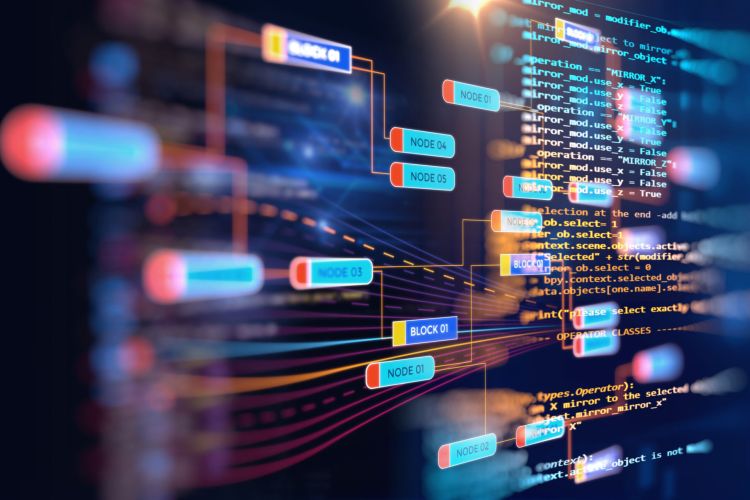
How Visual Programming Powers Complex Data Science
How visual programming works
As data science evolves and moves toward production, one question keeps coming up for practice group leaders: Which is the best way to do data science – coding or visual programming? Although these are just two different ways of expressing program logic. Practice group leaders should ask: Which type of programming environment is right for my data science team?
If you’re interested in the intricacies of new algorithms or even inventing them yourself, writing code is what you need to set up the inner wheels or implement new tools.
But in many cases, when doing data science to solve real-world problems, data scientists spend a lot of time doing things like accessing, organizing, and cleaning up data; trying out different AI/ML methods from different packages; understanding how to extract insights from results; or deploying results so that others can use them. And that’s even before they start worrying about all the additional requirements that come with such conditions as data/model management, reproducibility, or transparency. Unlike coding approaches, visual programming allows data analysts to focus on the science of the data and much less on lines of code. Here we take a closer look at what visual programming is in action:
Misconceptions
Visual programming is often confused with no-code or low-code automation platforms, which aim to enable new groups of people to use data science – people who previously had no access because they couldn’t write code. Depending on who you talk to, these platforms are advertised as an equalizer or perceived as a dumbing-down version of “real” data science.
The real power of visual programming is the opposite. It was designed to abstract away all the things data scientists don’t have to worry about to engage in productive data science. It is not just for standard, simple tasks, while the complex aspects are left for coders. In fact, creating visual workflows provides a different, highly efficient way to express program logic.
Expand your capabilities
Another current reality is that data science is not just programmed in Python or R. None of those languages were designed for massive data manipulation within a database. SQL, on the other hand, was. However, deploying data science as a web application requires web programming and, in particular, JavaScript for interactive analytic applications.
To create real data science, practice group leaders must enable data scientists to use all the remarkable methods that exist, not just those available within a single language. But if one believes that the only good data science is the one that has been hand-coded, then many possibilities are shut down. In fact, visual programming complements coding by allowing data analysts to mix the tools in their arsenal without worrying about compatibility issues. A growing number of tools integrate with a host of cloud and third-party connectors, which can make the work of data analysts very interesting.
By relying on a visual workflow with new tools, data analysts can do more of what they want to do and what they are trained to do: implement data analytics processes to easily apply the knowledge gained to a variety of business problems. This requires expert knowledge and skills to understand which tools to apply when and how. So data scientists have to combine tools implemented in different languages. They have to make sure that the tools and the experts who know them work well together without worrying about underlying languages and dependencies.
Visual programming is not just creating a user interface on top of a programming language. It’s a programming environment that sits on top of and encompasses all other technologies. To be clear: It’s not about hiding the complexity of the tools that data analysts want to use. It’s about showing all the necessary complexity in one consistent way.
Bringing it to life
Visual workflows allow all aspects of the data science process to be presented in a single, consistent environment, from data acquisition to modeling, visualization, and, ultimately, deployment. They allow data analysts to focus on what they know best: how to make sense of the data, while ensuring that they work together in a unified environment where the data engineer creates a workflow that the machine learning engineer might not have been able to write himself. However, the ML engineer understands it and can easily reuse it.
Visual workflows also provide a comprehensive way to document and communicate what has been done while working on data science, making it easy to revise previous workflows and then apply them to new tasks, as if providing “data science blueprints”-an invaluable tool. If done right, visual workflows allow for exploratory or “agile” data science, allowing you to quickly prototype different ways to capture data, different combinations of modeling algorithms and interactive visualizations, and to easily put the result into production when the right setup is found. This flexibility is difficult to achieve in more traditional coding environments because of the effort and forethought required to isolate each step in the data science pipeline cleanly enough to experiment with alternatives.
The goal of a forward-thinking enterprise is to realign both tools to accomplish more together than they could apart. Data science needs accurate, clean, and verified data, whereas RPA helps produce clean data.
Bragona Technologies can help you enhance your business by sharing our expertise and reaching new heights together.



